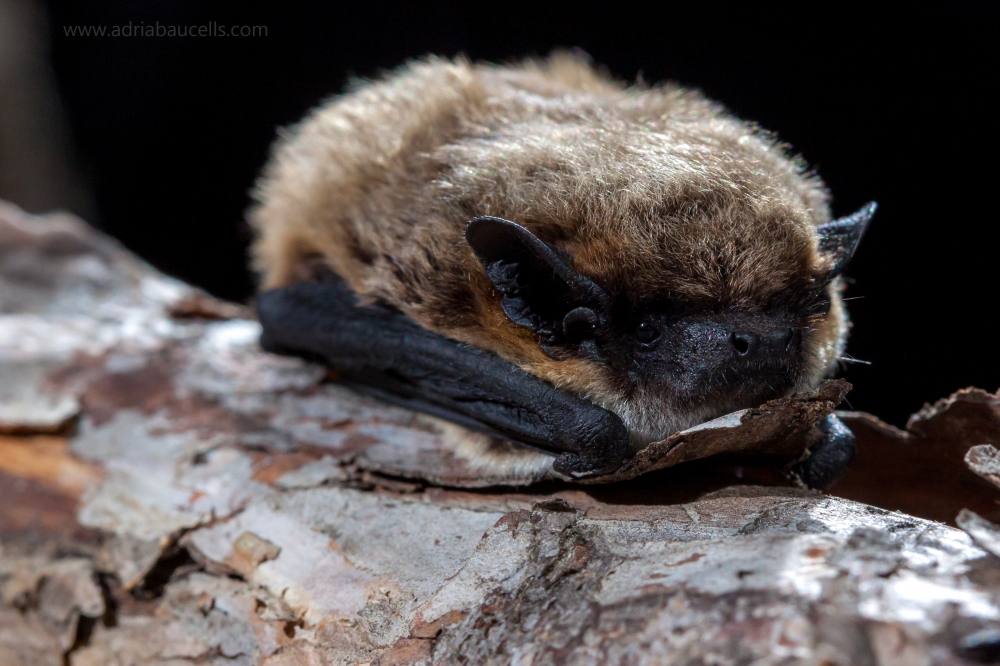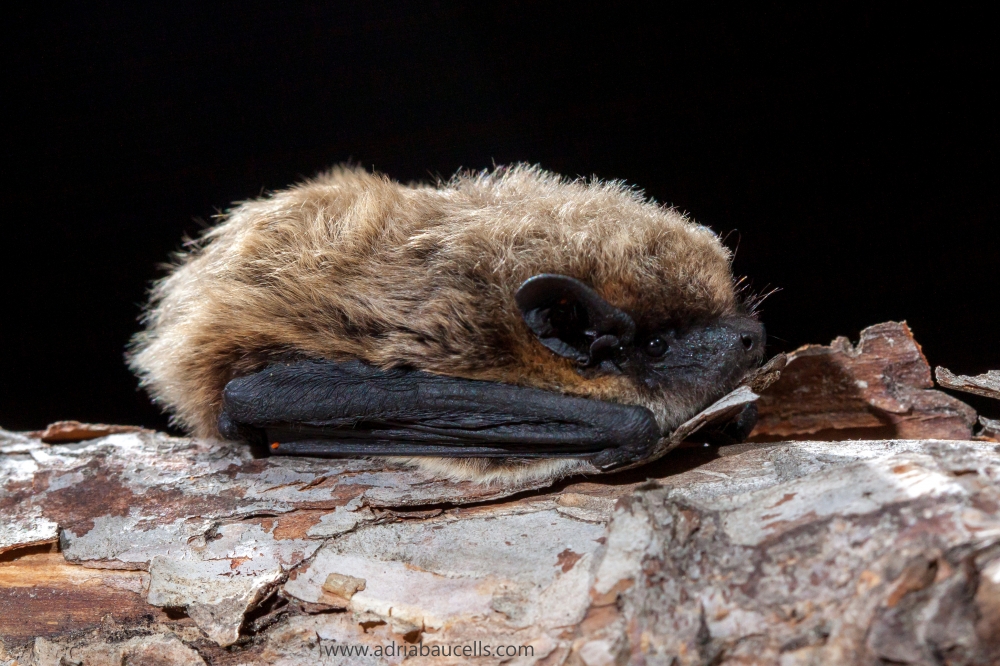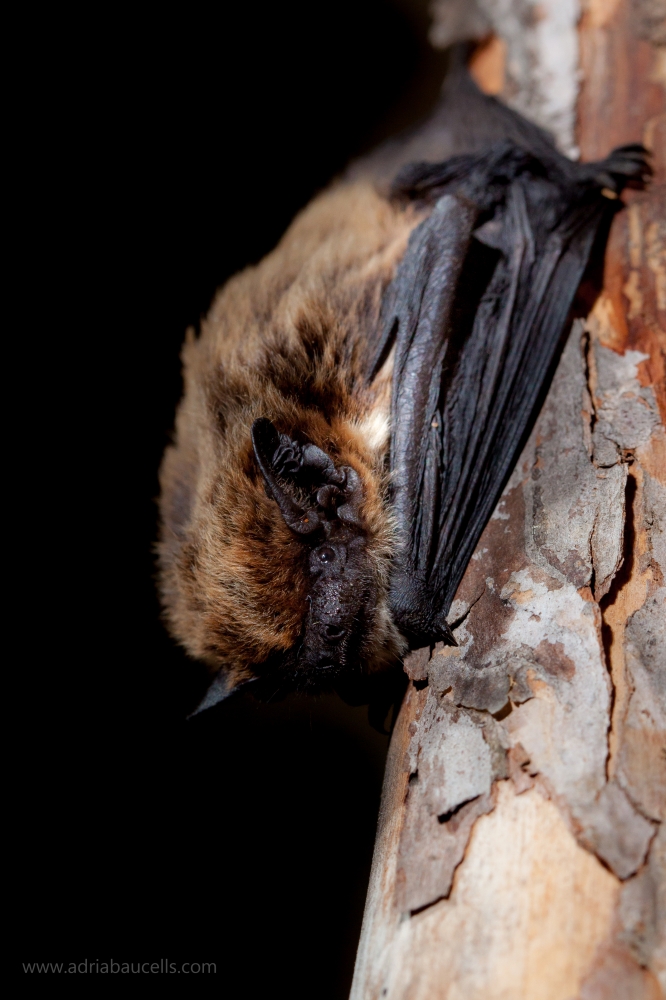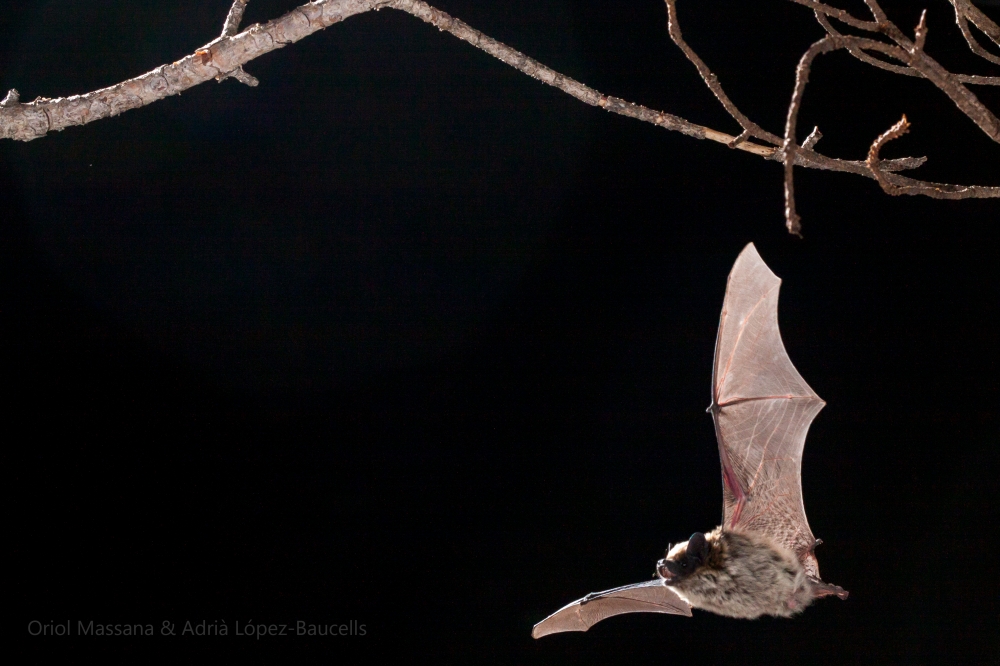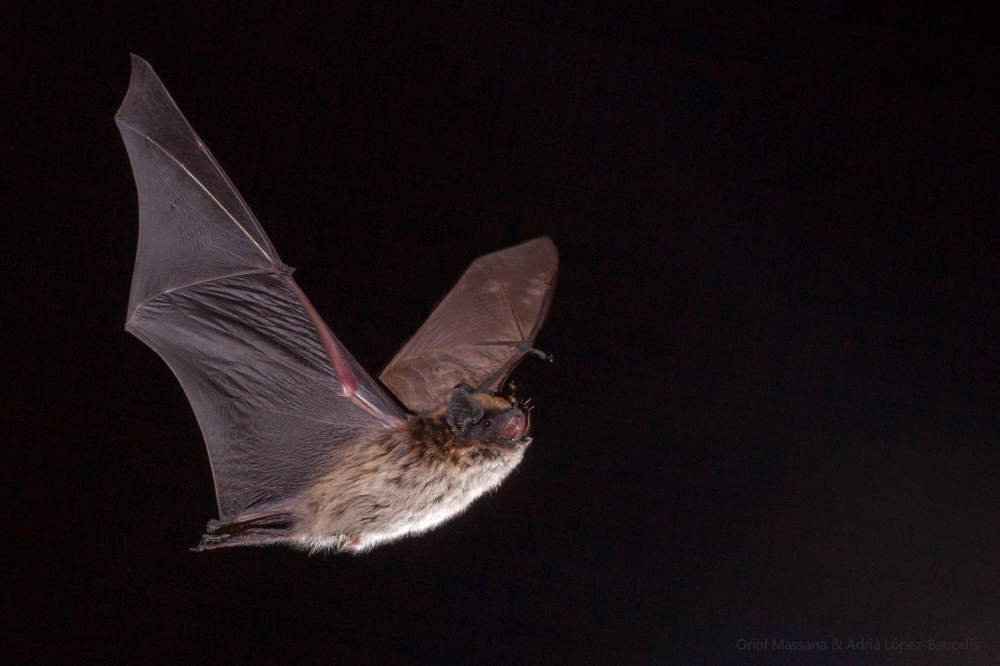Savi's pipistrelle bat
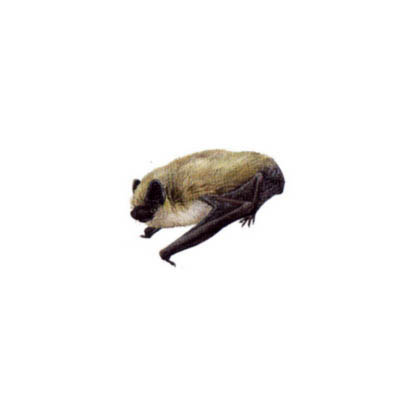
Hypsugo savii (Bonaparte, 1837)
Vespertilionidae
Least Concern
| Other names | |
|---|---|
| Catalan | Ratpenat muntanyenc |
| Spanish | Murciélago montañero |
| English | Savi's pipistrelle bat |
| French | Pipistrelle de Savi |
| Basque | Savi saguzar |
| Galician | Morcego do monte |
Description
It is a relatively small-sized bat, with a body length of 40-54 mm, a forearm between 31 and 38 mm, a weight ranging from 5 to 9 grams, and a tail of 31 to 43 mm. The fur is clearly contrasted, with the dorsal part being dark brown with golden tips on the hairs, and the ventral part grayish or whitish. Darker individuals tend to have a more grayish ventral fur. The ears are short and wide, resembling those of the Pipistrellus genus, but with a tragus broader than those of the serotine bat (Eptesicus serotinus). The skin on the face, ears, and wings is shiny black or dark brown. It has some distinctive features in dentition and also in the shape of its penis.
This species can be mistaken with the northern bat (Eptesicus nilssonii) due to its colouration, but the latter has a forearm larger than 37 mm.
Fotografies
Distribution
Its distribution covers the entire Mediterranean region, from the Iberian Peninsula to the Balkans, Asia Minor, and all the Mediterranean islands. It extends to the French Massif Central, southern Bavaria, Romania, the Czech Republic, Austria, Crimea, and Slovakia. There is an observed expansion of this species towards the north, particularly in Austria and the Czech Republic, with some migratory individuals reaching northern Germany. The animals found in North Africa, the Canary Islands, Sicily, and part of Sardinia are individuals of the related species Hypsugo darwinii.
Roosts and phenology
It is a crevice-dwelling species that primarily takes refuge in cracks in walls or rocks, crevices near the entrance of a cave, between wall joints or bricks, or in tree crevices. Solitary individuals can also be found under bridges or beneath rocks. Maternity colonies are primarily composed of about 15 females (though colonies of 40 to 70 animals have been found in Croatia and Italy) that take refuge in horizontal rock clefts and vertical crevices in walls and buildings, always more than 2 meters above the ground. Females usually give birth to twins during the months of June and July. In northern Greece and Bulgaria, females appear to give birth in early June.
The migration of this species remains unknown, although the maximum recorded movement is 250 km.
Habitat and diet
It primarily feeds in wooded areas, urban zones, shrublands, karstic valleys, cliffs, but adapts to various different environments. It is found in Mediterranean areas from the coast to high mountains (approximately up to 3,300 meters in altitude) and in karstic areas with extensive crops forming a mosaic with shrublands. It is challenging to find them in large and dense forest extensions.
The diet mainly consists of small flying insects such as lepidopterans, hymenopterans, and dipterans, but they can also feed on small beetles found in meadows, which can constitute a significant part of their diet during the early hours of the night. They have also been observed circling around 2-3 meters from an anthill, feeding on flying ants. They hunt their prey with a more direct flight than Pipistrellus sp., with fewer abrupt changes in direction, and can do so individually or in groups of 2 to 5 individuals. It is common to see them over riparian zones, and in Switzerland and Austria, they tend to hunt over shrublands and mountain meadows, near urban areas and cliffs. In Italy and the coastal areas of the Balkan Peninsula, they are well adapted to urban areas.
Echolocation
The echolocation of this species is similar to that of pipistrelles, featuring calls with a peak frequency (PF) between 30 and 35 kHz with a typical FM-QCF (frequency-modulated, quasi-constant frequency) structure. Although it is usually easily identifiable, it can be confused, especially with higher frequencies, in some situations, particularly with Pipistrellus kuhlii/P. nathusii. It can be distinguished by social calls, as they produce a rapid sequence of calls with a duration of 20-500 ms and frequencies ranging from 16 to 30 kHz.
Status
According to the IUCN Red List, it is considered Least Concern, with a stable population trend. It is protected by national laws, as well as by the Eurobats agreement, the Bern Convention, and the European Directive on Habitats and Species. In the Mediterranean region, it does not face direct threats, but building renovations reduce the availability of shelters, and excessive pesticide use leading to water contamination poses significant threats.
